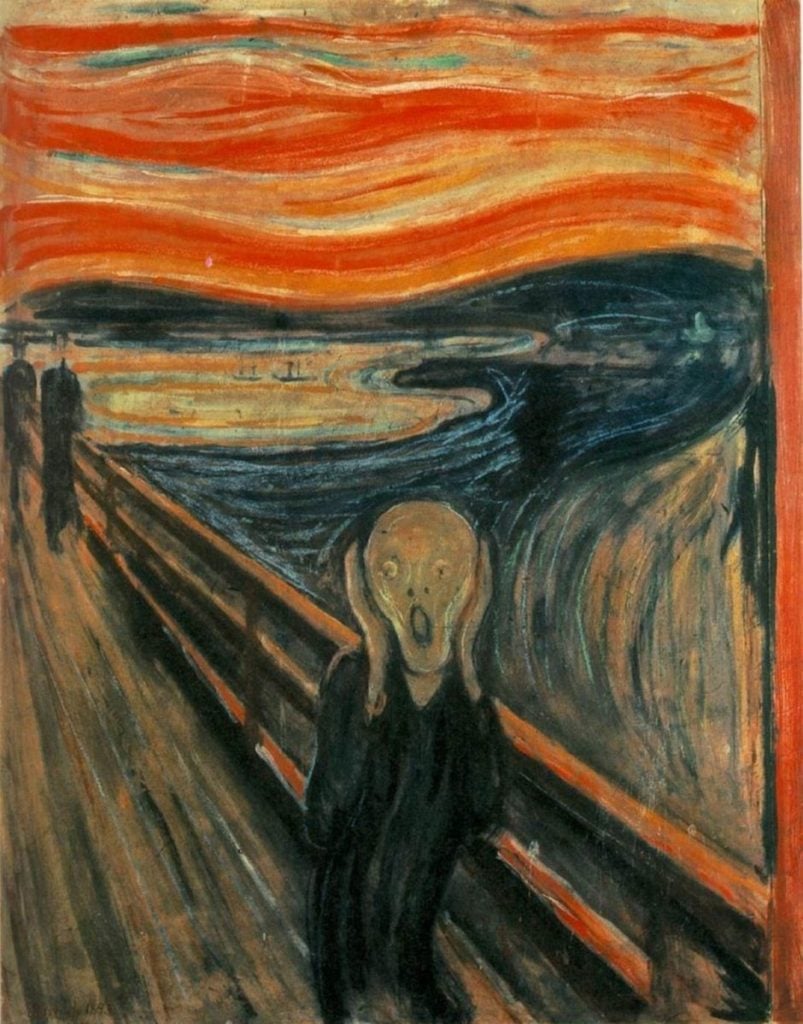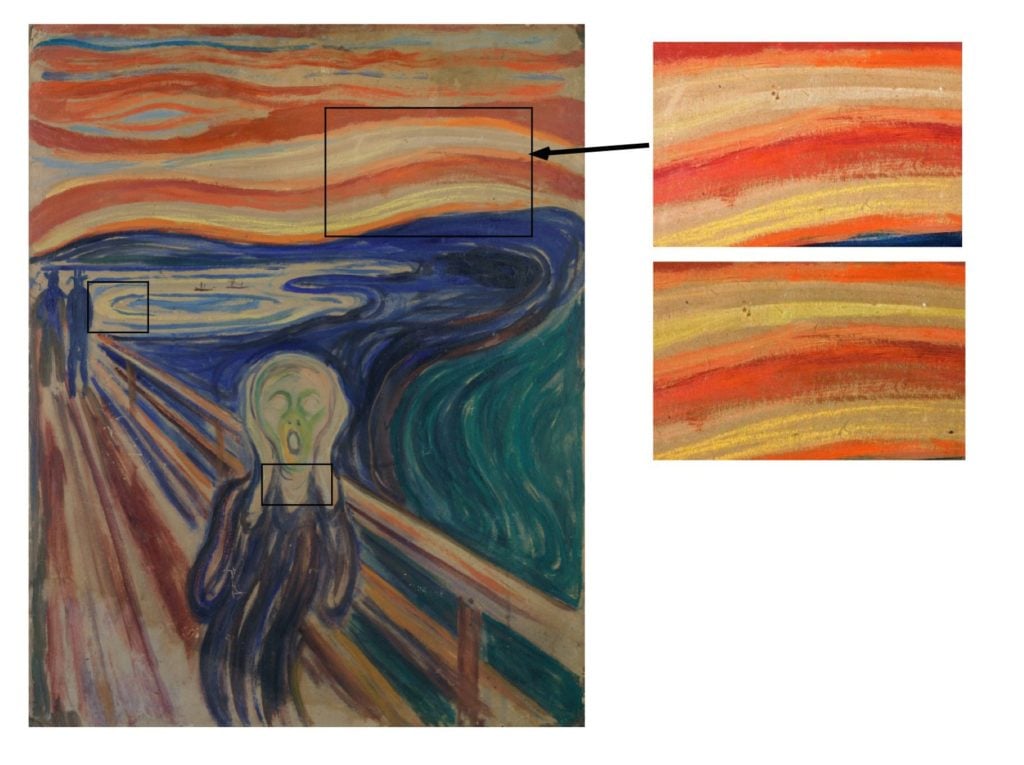Art World
Scientists Discover That Visitors to Oslo’s Munch Museum Are Destroying ‘The Scream’ by Breathing on It Way Too Much
Just like the rest of us, it seems that the painting needs to practice some social distancing.

Just like the rest of us, it seems that the painting needs to practice some social distancing.

Sarah Cascone

Back away from The Scream—literally.
The famed Edvard Munch painting is deteriorating, and it’s all because adoring visitors to Olso’s Munch Museum are crowding its display. To preserve the 1910 masterpiece, it would seem that, just like the rest of us, the painting needs to practice some social distancing.
“When people breathe they produce moisture and they exude chlorides,” Koen Janssens, a professor at the University of Antwerp, told the Guardian. That’s why, he explained, paintings should generally be kept at a remove from the breath of passerby. “You have to start working with the relative humidity in the museum, or isolate the public from the painting, or painting from the public, in a way that the public can appreciate it but they are not breathing on the surface.”
The investigation into the painting’s deterioration began when curators noticed that the yellow sections of the sky and of the screaming figure had begun to fade to white. Now, an international consortium of scientists has identified the cause. It turns out Munch chose an impure tube of cadmium yellow, which can fade and flake even in low humidity conditions. Although the experts initially thought the painting might be suffering from light exposure, it turns out this particular material is instead particularly susceptible to being breathed on.
In order to crack the case, scientists employed luminescence imaging of the piece to see how the paint was behaving and analyzed tiny fragments of paint from both the work itself and one of Munch’s surviving tubes of cadmium yellow (also in the Munch Museum’s collection). The leading theory is that the paint was tainted with chloride compounds during the chemical reaction used to produce the pigment.

Edvard Munch, The Scream (1910), from the collection of the Munch Museum, Oslo. Top right, a detail of the painting as it is today. Below right, a digital reconstruction of how faded areas might have looked like. Courtesy of the Munch Museum, Oslo.
Munch created four versions of The Scream between 1893 and 1910, two in pastel and two in paint, as well as a stone lithograph. The two painted versions were both stolen and recovered, the 1893 version from the National Gallery, Oslo, in 1994, and the Munch Museum’s copy in 2004.
The Munch Museum, which is due to move to a huge new space this year, will incorporate the scientists’ findings, recently published in the journal Science Advances, into its display of the fading work.